Christian Flynn talks to Andrew Frost about his latest exhibition, alien worlds, and the enigma of the obelisk…


Andrew Frost: I’ve really been taken by some of the images you’ve been posting to social media of work that’ll be in your upcoming show. Knowing you’re as into science fiction as I am, I immediately thought of the work of some classic SF illustrators, particularly Richard Powers. What’s the origin of these pieces? How did they evolve from previous work?
Christian Flynn: My work has always had a strong relationship to science fiction and this began for me in early childhood watching a lot of 1960’s, 1970’s and 1980’s Japanese animation. I was particularly taken with the Super Robots genre and anything futuristic that transformed. This interest led me to more serious sci-fi such as Arthur C. Clarke’s 2001: A Space Odyssey. The enigma of the obelisk and what it potentially represents are a permanent presence in my paintings, and this continues. So the obelisk can be seen as the link between my older work and the newer work. The older, larger colour fields being an interpretation of the obelisk and the newer work giving context to this unknown, using landscape and a highly abstracted narrative.
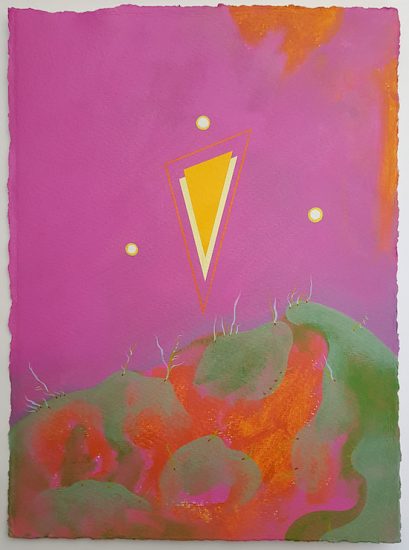
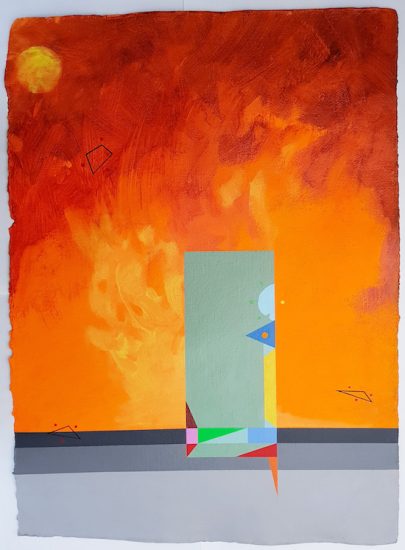
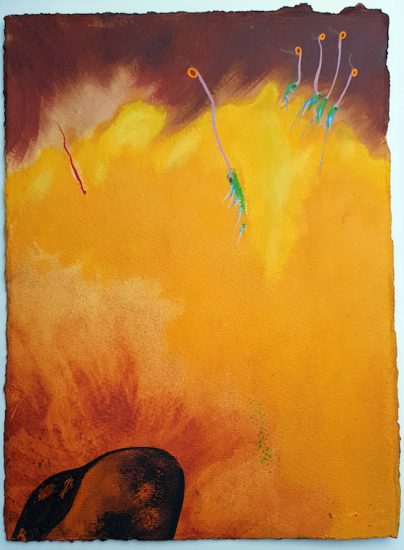
AF: I was surprised at the scale – they all appear to be small scale, and intimate works on paper. Can you explain your working method in terms of this scale, and what the effect is on the viewer?
CF: The move to a smaller scale was practical in the beginning. My living situation changed so I had to reduce the size of my studio. I’d had some fun playing with khadi paper which I’d torn out of an old diary, so to start with it was very much determined by circumstance. Strangely enough though working on a smaller scale seemed to open up a larger area to work within. I have a feeling that making the paintings on a smaller scale gave me license to put less information into the finished work. The effect of the smaller scale on the viewer I would guess could be two things. One, the smaller size and bright colours could draw in the viewer. A bit like how the Hubble telescope focused on a dark piece of the galaxy and found it was full of information. And two, the smaller size could simply allow people to just ignore the work. These works are asking for people’s attention, not demanding it. I think there is something in this quality that sits better with my ego, morals and ethics.
AF: You’ve left the edges of the paper ragged, but you’ve also painted right over to the edge too, which gives the work the look of a surviving fragment of something much larger. Is that something that’s intentional?
CF: It is. They are fragments of a larger narrative that may be impossible to read.
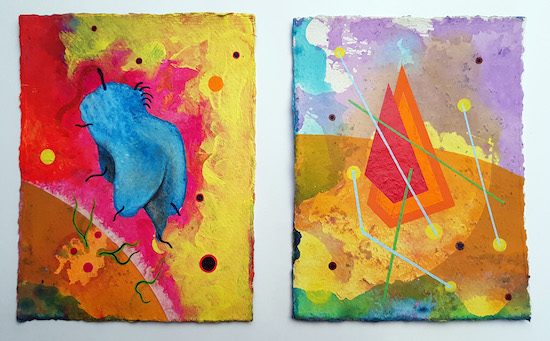

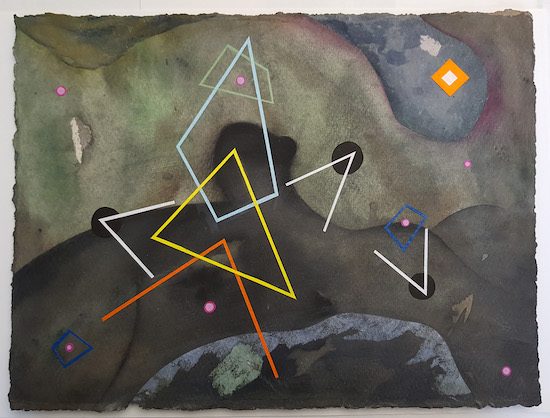
AF: Some of the titles allude to music, others to specific sci-fi tropes like alien planets, and I know you have a fascination with UFOs. How does all this end up in the work?
CF: Titling the work is the final part of my process. It is often very specific and is often an answer to the question ‘what does this painting say or where does take me or what could this be associated with’? It also is an opportunity to make fun of the work or myself. The relationship between my paintings and the UFO phenomena has become more substantial over the last two years. The UFO phenomena to me is two things; a story to follow in the news; and a community to associate with to speculate on this thing that is mostly unknowable much like the obelisk in 2001. Making work about something that is both real and unreal.
Christian Flynn’s Unfamiliar Theatre / Unknown Stage, is at Perc Tucker Gallery, Townsville, until the 11th of August.
